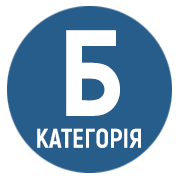ТО THE QUESTION OF THE SYMBOLISM OF THE IMAGE OF A HORSE ON THE ICONS OF ST. DMITRY SOLUNSKY: REFLECTED AND RON-REFLECTED CONNOTATIONS (A CULTURAL-MENTAL ASPECT) IN THE SEMANTIC FIELD OF THE ICON
DOI:
https://doi.org/10.24919/2522-4700.41.8Keywords:
an icon, semantics, a horse, a mentality, latent connotations, St. Dmitry Solunsky, philosophyAbstract
The purpose of this article is posing the question of the symbolism in the imaged of a horse. The reflect connotations and non-reflect connotations (cultural-mental aspect) in the semantic field of an icon on the example of the iconography of St. Dmitry Solunsky. The icons carries the complex symbolism contents. An icon is a link, which ties the earthen/folk with the spiritual. The iconographic image is a symbolism if we consider it as an individual system with some contamination processes. This research is devoted to the peculiarities of the image of the horse in the iconographic plot the miracle of Kaloyan. Conducted a series of semantic parallels that demonstrate mapping latent connections (orthodox religion and national perception) in the iconography XVI–XXI centuries. In the addition, other additional data were also used: the lives of the saints, some fairy tales, legends, proverbs, the symbolism of the dreams in the folk and orthodox tradition. The methodology. In the course of the work, such methods as the method of the comparative analysis, the cultural-structural and semantic methods of the investigation were used. To analyze the symbols of the experimental thematic unit, there were to reveal such issues as the symbolics of the horse, the meaning of the direction of the horse’s movement, the symbolics of the direction of the horse’s head. The scientific novelty of the research is in: using cultural-mental semantics used by the folk culture and Orthodox Church for the disclosure of connotation processes in the iconography. It is necessary to note that the colours of the horses are red at more cases. As to the question of the head’s turning of the horse, in majority of the icons, a horse is depicted in profile. Conclusions. The horse always occupies the secondary position. The image of a horse has become a latent rudimentary component. It includes the element of the mental perception and the idealized (“in itself”) block. The last compiles its own confrontation “friend or foe”.
References
Ж. Ле Гофф. Средневековый мир воображаемого. URL: https://yanko.lib.ru/books/cultur/goff-sred_mir_voob-l.pdf (дата обращения 12.03.2020).
Горохолинская А.Н. К вопросу о семантике изображения животных на православных иконах. 2017. URL: http://molodyvcheny.in.ua/files/conf/cult/12april2017/67.pdf (дата обращения 22.09.2020).
David W. Anthony. Eneolithic Horse Exploitation in the Eurasian Steppes: Diet, Ritual and Riding. (2000). URL: https://www.researchgate.net/publication/285778242_Eneolithic_horse_exploitation_in_the_Eurasian_steppes_Diet_ritual_and_riding(дата обращения 28.07.2020).
Панофский Є. Этюды по иконографии. 2009URL: http://www.studmed.ru/panofskiy-e-etyudy-po-ikonologii_629b6003794.html (дата обращения 20.08.2020).
Bartlett R. Why Can the Dead Do Such Great Things?: Saints and Worshippers from the Martyrs to the Reformation. URL: https://www.researchgate.net/publication/282256165_Why_can_the_dead_do_such_great_things_Saints_and_worshippers_from_the_martyrs_to_the_Reformation (дата обращения 20.09.2020).
Горохолинская А.Н. Наброски к классификации изображения конейв восточно-европейской традиции иконописания. 2017. URL: http://cejsh.icm.edu.pl/cejsh/element/bwmeta1.element.desklight-ed563067-55a4-41fc-a571-47c963ba4d47(дата обращения 01.10.2020).
Рогов А.И. Белградская икона с изображением Дмитрия Солунского и царя Мамая. 1968. URL: http://inslav.ru/sites/default/files/sovslav-1968-5.pdf (дата обращения 20.09.2020)
Павел Алеппский. Путешествие антиохийского патриарха Макария в Москву. 2016. URL: http://www.vostlit.info/Texts/rus6/Makarij_3/text22.htm (дата обращения 20.09.2020).
David Woods (2000). Thessalonicaёs Patron: Saint Demetrius or Emeterius? URL: https://www.jstor.org/stable/1510028?seq=1 (дата обращения 30.09.2020).
Святитель Димитрий Ростовский. Жития святых. Страдание и чудеса святого славного великомученика Димитрия. 2015. URL: http://www.biblioteka3.ru/biblioteka/dimitr_rostov/oktjabr/txt92.html (дата обращения 20.09.2020).
Трощинский П. Святой великомученик Димитрий Солунский. 2014. URL: http://tihvinskiy.ru/svyatoy-velikomuchenik-dmitriy-solunskiy/(дата обращения 20.09.2020).
Иоанн Ставракий Свод древнейших письменных известий о славянах (1994). URL: http://inslav.ru/publication/svod-drevneyshih-pismennyhizvestiy-o-slavyanah-m-1994-t-i-i-vi-vv-1995-t-ii-vii-ix-vv (дата обращения 06.10.2020)).
Фартусов, В.Д. Руководство к писанию икон святых угодников божиих в порядке дней года. 2002. URL: http://www.myasnikov.net/Fartusov%20Guide%20icons.html. (дата обращения 20.09.2020)
Дионисий Фурноаграфиот. Ерминия или наставление в живописном искусстве. 1868. URL: http://nesusvet.narod.ru/ico/books/erminiya.htm (дата обращения 20.09.2020).
Ралица Русева. Образът на св. Димитър в българското изкуство. 2017. URL: https://www.academia.edu/35109179/THE_CHURCH_OF_ST_DEMETRIUS_IN_BOBOSHEVO_ARCHITECTURE_WALL_PAINTINGS_CONSERVATION_Hristina_Staneva_Ralitsa_Rousseva (дата обращения 20.09.2020).
Тернер В. Символ та ритуал. Москва : Издательство «Наука», 1983. С. 44.
Пропп В. Исторические корни волшебной сказки. 2000URL: http://lib.ru/CULTURE/PROPP/skazki.txt (дата обращения 20.09.2020).
Толстой Н.И. Славянские древности. Москва : Международные отношения. Т. 2. 1999. С. 697.
Дионисий Ареопагит. О небесной иерархии. 2013. URL: http://www.hesychasm.ru/library/dar/shierarchy.htm (дата обращения 20.09.2020).
Горохолинська Г.М. Семантика образу коня у сновидіннях та повір’ях (індуктивні та редуктивні конотації українського культурно–ментального елементу семіосфери). 2017. URL: https://tureligious.com.ua/semantyka-obrazu-konya-u-snovydinnyah-ta-poviryah-induktyvni-tareduktyvni-konotatsiji-ukrajinskoho-kulturno-metalnoho-elementusemiosfery/(дата обращения 20.09.2020).
Жолтовський П.М. Український живопис XVII – XVIIІ ст. Київ : Наукова думка, 1978. С. 323
Успенский Б.А. Семиотика искусства. 1995. URL: http://nesusvet.narod.ru/ico/gloss/g_index.htm (дата обращения 20.09.2020).
Турилов А.А. Почитание вмч. Димитрия у южных славян и на Руси. 2007. URL: https://www.sedmitza.ru/text/850095.html (дата обращения 20.09.2020).)


